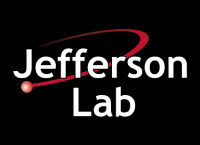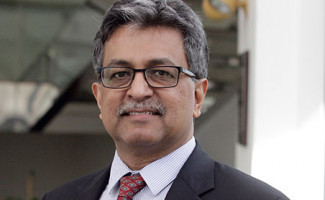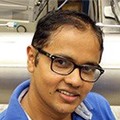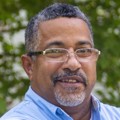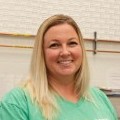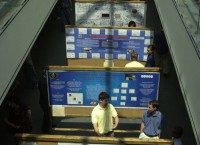Researcher Relies on Jefferson Lab’s Powerful ‘Microscope’ to Study Weak Forces
Krishna Kumar has made it his life’s work to study the space within atoms. He pursues answers to life’s basic questions: Where did we come from? How are we put together? What happened right after the Big Bang?
His quest for those answers led Kumar to be one of the first scientists to use Jefferson Lab when it began operating in the early 1990s. He was an assistant professor at Princeton University at the time, and he needed the high-end equipment available at Jefferson Lab to pursue his work. “Even a top place like Princeton does not have its own in-home, high-energy accelerator,” Kumar explains. “For the kind of research I wanted to do, Jefferson Lab was quite unique.” Jefferson Lab had the Continuous Electron Beam Accelerator Facility (CEBAF)—the first particle accelerator of its type in the United States.
One Giant Microscope
As Kumar describes it, the particle accelerator at Jefferson Lab works as a powerful microscope to help visualize atomic and subatomic particles. “There is a limit to what a conventional microscope can do because at a certain point, quantum physics plays a role,” says Kumar. “We are trying to image nuclei and things much, much smaller than a nucleus.”
Specifically, Kumar is interested in better understanding neutral weak interactions, which are interactions between subatomic particles resulting from the weak force connecting particles. The weak force is one of the four known fundamental forces in the universe, which also include gravity, the strong force and the electromagnetic force. Exploring the weak force allows physicists a window into how the universe works. Kumar is involved in several experiments at Jefferson Lab that are measuring neutral weak interactions, including HAPPEx, PREX and MOLLER.
A Collaboration of Scientific Researchers
Kumar is one of many researchers from around the world who are reliant on the powerful equipment at Jefferson Lab as they pursue their own research into the nucleus. Yet, all of the scientists who use the lab’s facilities have one thing in common: their drive to understand. “We are continuously building on and refining our understanding of the forces among electrons and quarks, and exploring their consequences,” he says. “That’s what we all do.”
The “all” Kumar refers to includes the 1,500-plus members of the Jefferson Lab Users Group, a quarter of whom are university professors from around the world. Kumar himself is a professor in the department of physics and astronomy at Stony Brook University. “Most things done in modern research are done collaboratively,” says Kumar, who became chair of the Jefferson Lab Users Group in June, 2017. “As Chair of the Users Group, my first job is to ensure that users have a voice at the lab and get the resources needed to pursue the world-leading nuclear physics research enabled by CEBAF,” Kumar says.
Each experiment carried out at Jefferson Lab typically has between 50 to 100 researchers dedicated to it, many of whom are graduate and postdoctoral students looking to work alongside senior scientists from around the world, including leaders in their fields.
With some of his experiments taking eight years or more to begin after the proposal has been approved by an international committee that meets at least annually at Jefferson Lab, there is plenty of time for Kumar and his collaborators to plan, study and prepare.
On Sept. 27, 2017, researchers had the additional excitement of a 12 GeV Upgrade completion, shaping a new scientific program going forward. “The 12 GeV Upgrade has enabled new measurements probing the building blocks of matter and also testing the fundamental theory of the strong and weak forces that are not possible elsewhere worldwide,” Kumar explains. “Technological innovations required to carry out the upgrade and the new measurements will benefit many related areas in medical physics, cryogenics, electronics and superconducting radiofrequency technology.” Kumar expects the upgrade to lead to groundbreaking new results in nuclear physics.
A Cross-discipline Education
Along with his own preparation and study, Kumar spends much of his time mentoring young scientists. “A Ph.D. experimental nuclear physicist has to know quite a bit about many fields,” he explains. “One of the most important skills for a scientist is to be able to work with others who have their own skills. We train students well at Jefferson Lab. They tweak. They use screwdrivers, soldering irons, computers and software, among other things.”
Why train young scientists in various cross-disciplines seemingly unrelated to nuclear physics? Because, according to Kumar, “Scientists need to be able to work with mechanical and electronics engineers and technicians and many others. Scientists need to be able to understand teammates’ disciplines, explain what needs to be built and identify the specifications” needed in order to enable them to have a successful experiment.


